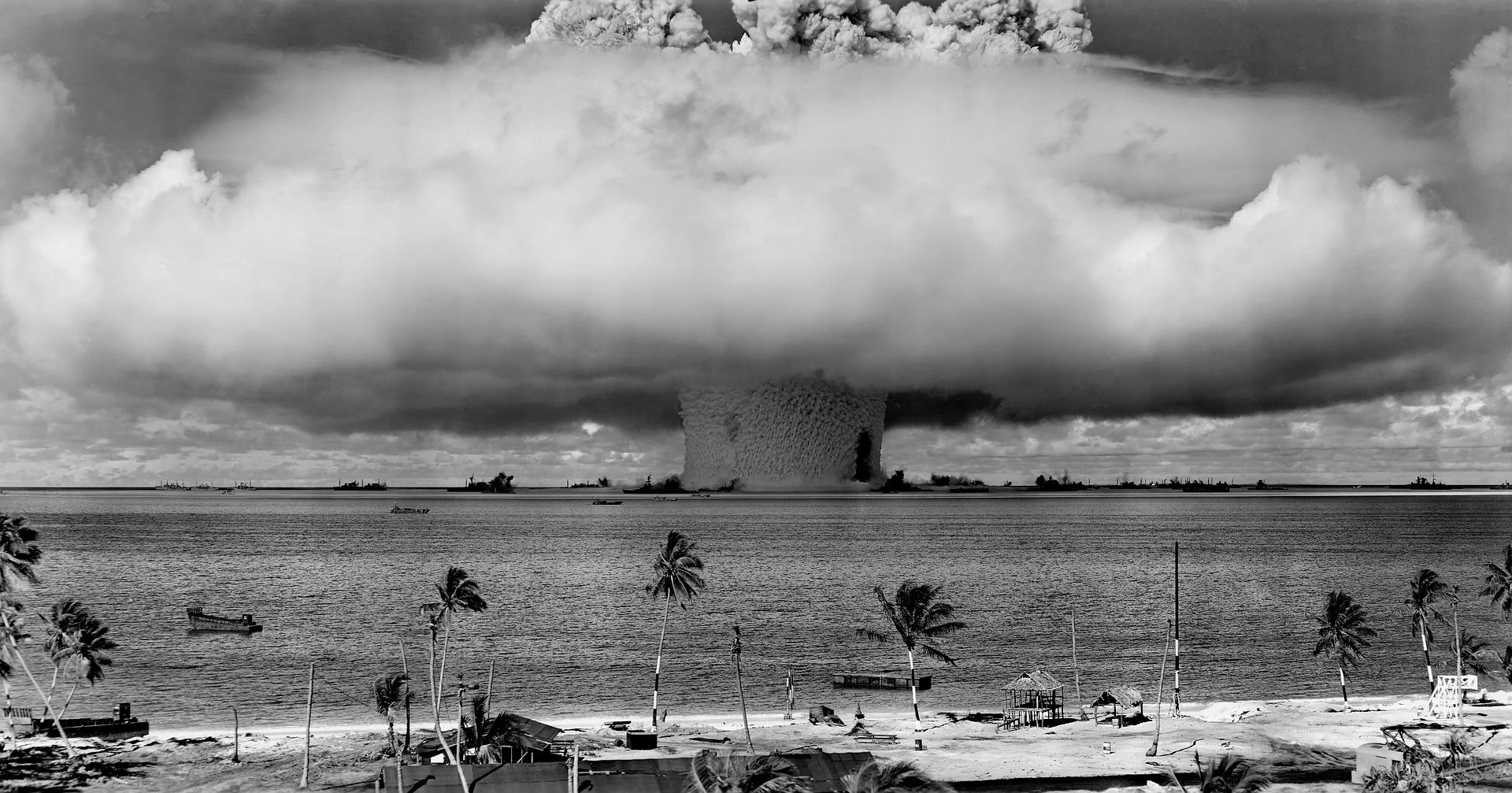
Why Do Nuclear Bombs Form Mushroom Clouds?
If you've ever looked up pictures of nuclear explosions on the Internet, you've probably noticed something interesting about them. Regardless of the type of explosion or where it occurs, they all appear to form a mushroom cloud' in the sky.
Why do nuclear explosions produce mushroom clouds?
A nuclear/atomic explosion produces a mushroom cloud because the detonating bomb rapidly releases large amounts of energy. This energy produces a very hot gas bubble, which interacts with the cooler surrounding air, causing it to become less dense. In the event of a nuclear detonation, the bomb emits a blast of x-rays that ionize and heat the surrounding air, creating a hot bubble of gas known as a fireball. The hot fireball rises quickly, generating a powerful updraft that is then filled by the surrounding air and dust, forming a mushroom cloud in the process.
This phenomenon is called the Rayleigh-Taylor instability, which describes the interaction between two materials (fluids or gasses) of different densities when they're forced together.
This principle essentially describes the movement of two different densities of fluids. Any given force impacts fluids of varying densities in different ways due to their various properties. Simply put, RT instability occurs when a lighter one supports a heavy fluid. The less-dense fluid will pass through the more dense fluid as the fluids approach equilibrium.
How big is a nuclear mushroom cloud?
Nuclear explosions are measured in Megatons and Kilotons, with one Megaton equaling one million tons of TNT and one Kiloton equaling one thousand tons.
1945 nuclear explosion in Hiroshima, Japan, exploded with the energy of 15 kilotons.
According to OSTI.gov, mushroom clouds can reach heights of tens of thousands of feet in minutes. The majority of passenger flights fly at the height of approximately 33,000 feet.
Let's take a look back at what happened after the Hiroshima nuclear bombing in 1945.
On August 6, 1945, at 8:16 a.m., the world's first atomic bomb attack was launched against Hiroshima. In about ten minutes, the cloud grew to over 60,000 feet or nearly 20,000 meters.
The Enola Gay, the plane that dropped the bomb, circled to better look at what was going on about 30 seconds after the explosion. The mushroom cloud had risen above them by this point, despite the plane's altitude of 30,000 feet.
The cloud had risen above the Enola Gay's cruising altitude within the first 30 seconds. This means the cloud rose 10,000 meters in 30 seconds. It implies that the cloud rose at 333 m/s at first, then slowed to 100 m/s after 10 minutes.
Biggest Mushroom Cloud Ever Formed
The detonation of Tsar Bomba, the most powerful nuclear weapon ever detonated in human history, resulted in the largest, most powerful nuclear explosion of all time. The bomb was developed in 1961 by a group of Soviet physicists led by Andrey Sakharov. On October 30, 1961, a Russian bomb was tested. It had a yield of 50–58 megatons of TNT, making it roughly 3,300 times more powerful than the Hiroshima bomb.
The bomb's shockwaves nearly destroyed the plane that dropped it and circled the globe three times.
The Soviet Union tested a nuclear bomb in 1961 that was so powerful that it would have been too substantial to use in a war. And it had far-reaching consequences of a different kind.
On October 30, 1961, a Soviet Tu-95 bomber took off from Olenya airfield in Russia's far northwestern Kola Peninsula. A massive, swept-winged, four-engined beast tasked with hauling Russia's nuclear arsenal.
The Tu-95 was carrying a massive bomb beneath it, one that was too large to fit inside the aircraft's internal bomb bay. The bomb was 8m long (26ft), nearly 2.6m (7ft) in diameter, and weighed more than 27 tonnes. It resembled the 'Little Boy' and 'Fat Man' bombs that had devastated the Japanese cities of Hiroshima and Nagasaki a decade and a half before.
Tsar Bomba exploded at 11:32 a.m. Moscow time. The bomb ignited a five-mile-wide fireball in an instant. The force of its own shockwave caused the fireball to pulse upwards. The flash could be seen from 1,000 kilometers (630 miles).
The mushroom cloud created by the bomb soared to 64km (40 miles) in height, with its cap spreading outwards to nearly 100km (63 miles) in length. It must have been an awe-inspiring sight, even from afar.
According to one of the cameramen who witnessed the event, the bomb produced "a powerful white flash over the horizon and after a long period of time he heard a remote, indistinct, and heavy blow as if the Earth had been killed." The blast was so powerful that the shock wave caused the Tu-95 to drop 3,281 feet (1 kilometer) in altitude, but the pilot regained control and safely returned the plane to its base.
Tsar Bomba, despite its success, was never considered for operational use. As a result, Tsar Bomba was regarded as a propaganda weapon. Following the 1961 explosion, Andrey Sakharov became more involved in limiting nuclear tests to underground locations. A similar ban was signed in 1963 by the United States, the United Kingdom, and the Soviet Union, and numerous other countries later joined the treaty.

0 Response to "Why Do Nuclear Bombs Form Mushroom Clouds?"
Post a Comment